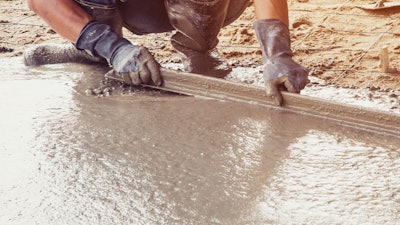
In search of some universal advice, Concrete Contractor connected with industry experts for insight into the key maintenance steps for a concrete screed. According to what we’re told, no matter the type, the number one most important thing a concrete contractor can do for their screed: keep it clean.
Cleaning sounds simple but concrete has a timer and time isn’t on your side. So, being diligent about routine work will make a major difference in the long run.
“That’s the number one thing,” says Seth Ulmer sales manager at Curb Roller Manufacturing. “I’ve got a background where I’ve had the advantage to work with several different types of screeds, the number one thing is keeping it clean.”
Kyle Hohmann agrees. As the vice president of sales and marketing at Ligchine. Roughly 60% of the calls they receive are based in maintenance.
While this step is straightforward, any build-up of concrete can create excessive weight forcing a bow or flex, rough areas on the screed, or imperfections on the surface that can promote damage affecting the quality of the finish. It’s recommended that contractors take the time to do some spot cleaning during any job scheduled to be over an hour or two to avoid excessive build-up. This regular cleaning can avoid stronger remediation efforts like hammering or grinding later. Screeds are designed to be accurate and it’s vital to maintain that structural integrity. Depending on the screed and how sensitive it might be anytime aggressive force is used risks compromising that integrity.
Clean the screed as soon as possible. If you miss that window by moving manpower to trowel machines or finish edges, it will be more difficult to get your equipment back to how it was when you started. This may be easier for some types of screeds than others. The more intricate and the more moving parts are involved, build-up also becomes more of an issue.
Caught early enough, any concrete should be able to be sprayed off with water – the most common method. However, if the concrete sets too much, the concrete will need to be removed with a brush or scraper to break any set bonds. There are also several cleaning products available on the market – many non-toxic – to help; read the instructions carefully and be cautious to use the correct concrete remover to meet your needs. Some of these may be strong enough to in advertently remove the protective paint from equipment. “Muriatic acid is an old-school cleaning device where the acid will ‘eat’ the concrete and literally break it down chemically but it's also pretty tough on materials like aluminum or other things that screeds can be made of,” notes Ulmer. Diesel fuel is a classic choice, but it's not the most environmentally friendly option and many commercial, federal, or DOT projects can specify the type of form release you can use. Treating 90% (or more) of the surface with a form release should help speed cleaning procedures.
Note: Always remember to wear the appropriate gloves and other personal safety equipment.
Contractors might be able to smooth out small imperfections on the finishing blade like knicks or little dents with an angle grinder, but they aren’t meant to last forever. It's likely that your screed finishing blades were designed to be replaceable.
Regular washing with water and brushing during the project should neutralize the reaction and wash away concrete before it has a chance to chemically set. If not, multiple layers of build-up set together and can inhibit functions, require moving parts to be adjusted, and recalibrated. Even small dust or sand can create issues if this maintenance isn’t being done in a timely manner.
When a brush is needed, look for a fairly aggressive bristle. Contractors should use a still-bristled, plastic or natural fiber brush but, Ulmer notes that steel is generally not required until you’re combating dry concrete by scraping the surface. This effort may be necessary to work off any build-up if/when the equipment need reconditioning or during annual maintenance. It may be tempting to take a wire brush wheel on an angle grinder, or something mechanized to work through the build-up. However, this may remove paint and risk changing the character of the surface.
One often overlooked step in maintaining the more intricate screeds is addressing any moving parts and bearings that require grease. Ready-mix is very abrasive and can get into moving parts and bearings, and sand can even become flushed in during washing. Hohmann suggests that contractors should grease the necessary parts at the end of the day – daily. “[This] forces that water and anything that has any debris that has gotten into that bearing surface out,” he explains. “It really is the best time to do that maintenance. You need to be greasing all of those bearings that carry the shafts, vibrating components, and then the auger.” Be care to not over grease or use a powered-grease gun on bearings.
It’s good practice to schedule time for maintenance like changing air filters, fuel filters, changing the oil, and others. Ligchine recommends to schedule service intervals based on hours of use and to follow recommendations from the engine manufacturer in your machine.
Another good practice is to confirm your grade with a string line or laser level. "You want to double check the flatness," says Rick Gramoll director of sales and marketing at MBW Inc. He suggests bringing a string line taught against the screed to help identify bows or dips.
From the floating vibratory to the technologically advanced laser-guided screed, cleanings daily and even during the placement should prolong the longevity of virtually any screed and eliminate the need for stronger remediation efforts later.
Handheld-Board Screeds
The more buildup that remains on lumber or any type of straight edge, the heavier the object becomes. Even a 2x4 or 2x6 board, this additional weight can compromise the integrity of the straightness and cause it to sag. Buildup on the leading or cutting edge of the screed will leave a wanted disturbance on the surface.
Float Screeds
It’s no difference for a float/wet screed with or without a vibrator motor. The additional weight of excessive buildup will decrease the effectiveness of the vibration into the surface of the concrete. The buildup will also eventually start to fight against the exciter.
“In terms of maintenance, the easy stuff is keep the bar clean,” says Gramoll. “When you’re done using it, wash it, use a brush to get all the concrete off and you’re good to go.”
Internally, wet screeds don’t require a lot of maintenance save for any standard work for the gas-powered versions. Some also include petroleum or rubber-based internal shock mounts that can wear out over time and may need replacement. Check the manufacturer to see if they provide a kit.  Routine cleaning and maintenance should include the bearings located at the end of the screed.Curb Roller Manufacturing
Routine cleaning and maintenance should include the bearings located at the end of the screed.Curb Roller Manufacturing
Roller Screeds
Roller screeds were designed to be as low maintenance as possible, though there are a few things contractors will need to take care of before, during, and after each job.
The spin of a roller screeds provides a unique ability to utilize the abrasiveness of portland cement and sand to clean and skim concrete from the pipe or tube as contractors pull it along - allowing less frequent intermediate cleaning during the pour.
Some shaped roller screeds include a guide ring that will need to be replaced as it wears away against the formwork. This ring will scribe the screed off the formwork and needs to be the appropriate size for the project at hand. It’s recommended to inspect the guide ring and other wear parts to ensure they in good condition before the pour is started. Concrete is one of the most abrasive surfaces you can run a screed on, so if you need to use existing concrete as a guide, consider placing a steel strap or something to protect any abrasion from the screed itself.
Truss Screeds
One of the unique qualities of a truss screed comes from its design. These typically feature an open A-frame structure with an exciter system for vibration. Due to the open design, there's no way to keep concrete from splashing onto and into the frame. As such, cleaning can be a laborious task, it’s recommended to use a power washer. Grease any internal bearings after pressure washing to remove built up water.
Consider the connections, holes, bolts, and nuts when cleaning to make sure any concrete has been removed. MBW, for example, takes an extra step and utilizes blind knots to reduce if not avoid collecting any concrete on splines and threads. "This makes sure that those blinds are never covered in concrete," says Gramoll.
Laser-Guided Screeds
Because the laser-guided screed can also feature a cutting plow, vibrating plan, auger, or even roller screed, many of the same tactics and issues apply from its counterparts. However, since laser-guided screeds tend to be on the more top tier investments for concrete contractors for screed platforms, keeping it in top-tier performance is vital.
“I've been on a site before where a screed a laser-guided screed broke in the middle of a pour and when you're relying on a piece of equipment to do a lion's share of the screeding work and it goes down, you have to figure out a backup plan instantly,” says Ulmer.
The electrical systems on modern laser-guided screeds can almost self-diagnose themselves where the system reports any errors. “It’s not like the old days where you had these elaborate wiring harnesses,” notes Hohmann. “These new systems run less wires and it’s kind of a smart based system… it’s come a long way and there’s a lot less for the contractor to have to worry about.”
Another aspect to laser-guided screed maintenance is to check the geometry of the plow, auger, and finished blade. Hohmann suggests that contractors can utilize a level to ensure accurate measurement and work. Ligchine, for example, has a very specific geometry and provides a guide on how to set it up. Over time, that finished blade and/or auger can wear. If the auger begins to wear or the blade becomes shorter, then that changes the geometry and how level you are. It’s recommended to continually check to make sure that the head is set up correctly for optimal performance.
“Allowing those parts to wear and that head to come out of calibration will affect the quality of the pour,” says Hohmann. “Ultimately, it will affect your FF and FL numbers over time if you neglect it long enough.”
Make Someone Responsible
“When you have multiple people using one tool, they’re using it and maybe not paying that close attention to it,” notes Ulmer. “Who’s responsible for it at the end of the day?” Having one team member assigned to the maintenance on your screed(s) can go a long way. Larger investments like laser-guided screeds typically have an operator assigned to them, why not have designate a person on the team for all screeds. This person would be responsible to periodically check the screed during the placement, inspect hardware, make sure it’s clean afterward, and more.
Transporting and storing equipment can also be an Achilles heel in keeping anything that’s supposed to be accurate remain accurate – like a concrete screed. Having an assigned storage place would help keep the screed safe from damage, theft, and the weather.
This person would also be able to share some basic education on the equipment to the new hires on the team; allow some time to walk everyone through how to use it safely, how to care for it, how to clean it, how to move it around the site, and so on.
After all, “one ounce of prevention can save you a lot of heartache,” reminds Hohmann.
Whether it’s a handheld board, the latest laser-guided screed, or the longest truss screed, always refer to your equipment owner’s manual.


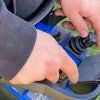
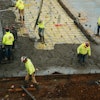
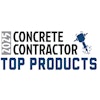
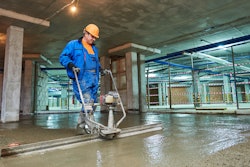
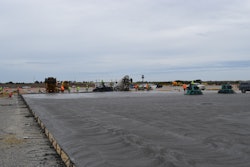



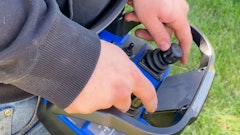


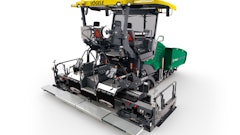
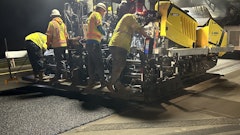

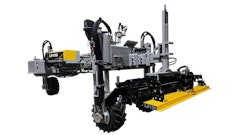
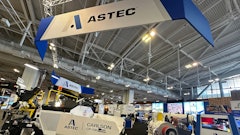

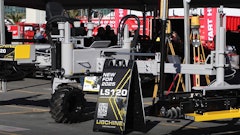
![Hj1y06a9 720[1]](https://img.forconstructionpros.com/files/base/acbm/fcp/image/2025/01/hj1y06a9_720_1_.67979fbd9d2cf.png?ar=16%3A9&auto=format%2Ccompress&fit=crop&h=135&q=70&rect=21%2C0%2C677%2C380&w=240)